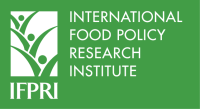Can the US Farm Bill and EU Common Agricultural Policy Address 21st Century Global Food Security?

With the recent passage of both the Common Agricultural Policy (CAP) in the European Union and the Farm Bill in the United States, the EU and US are headed down “divergent paths” in the way their agricultural policies support their own farmers. Nevertheless, both policies feature large public expenditures towards farm subsidies. What type of impact will these policies have on international food security and production and public costs in the US and EU and how will they address the major global food security challenges of the 21st century?
At a recent policy seminar, 21st Century Agricultural Policies: The 2013 EU CAP and 2014 US Farm Bill, a panel of experts outlined the respective agricultural policies of the EU and US. Jean-Christophe Bureau from AgroParis Tech began with a presentation of the 2014 CAP reform from the EU member states. According to Bureau, not too much has changed from past policies in terms of the economic breakdown of EU subsidies, with direct payments to farmers accounting for an estimated 95 percent of total CAP expenditures—nearly 40 percent of the total EU budget. With the exception of a special payment for “green” practices, now accounting for 30% of the EU support and intended to counteract a dramatic loss of biodiversity in the region, these subsidies take the form of direct payments to farmers, “decoupled” from specific crops or land management practices.
The US Farm Bill, meanwhile, represented a shift toward issuing higher subsidies to farmers when prices or farm-based incomes are low, explained IFPRI’s David Orden. Though the 2014 US Farm Bill eliminated an estimated $5 billion in annual fixed direct payments to farmers, the vast majority of this money was reallocated to fund newer programs geared toward protecting farmer incomes against crop losses, declining revenue and lower commodity prices. The resulting “farm safety net” that emerged is quite complex and, according to Orden and his colleague Carl Zulauf from Ohio State University, over-subsidized. With continued low grain prices, for example, Orden predicts that “2014 looks like a potentially costly year.” Under very low prices high payments could potentially exceed World Trade Organization limits and the US shift toward payments made when prices or revenue decline will make future global trade negotiations difficult.
Shahid Rashid from IFPRI presented the developing country perspective on these two agricultural policies. He explained that many researchers and policymakers will focus on the bottom line of the CAP and note that total spending on EU farmers remained the same—bad news for farmers trying to compete in developing countries. Meanwhile, insurance and commodity support programs under the new US Farm Bill protect American farmers at roughly the same cost as previous farm subsidies. Moreover, Rashid explained that such support offers a poor model for developing countries. Subsidies are far from a one-size-fits-all solution for all countries. The bottom line is that—in developing countries in particular—subsidies consume a large portion of public expenditures that might offer higher returns in growth and poverty reduction if invested in programs such as agricultural research and development and social safety nets.
Vince Smith from Montana State University offered a critique of the US Farm Bill, noting that these high subsidies will mainly go to wealthy farmers, and will impact the US government’s ability to negotiate internationally. He also questioned whether crop insurance is the most efficient use of funds, arguing that such programs are rarely the best fit for many developing countries since they often require upwards of 60 percent subsidies for many smallholder farmers to purchase them.
Shenggen Fan, IFPRI’s director general, concluded the panel with some eye-opening comparisons: European farmers receive €40 billion in subsidies annually and American farmers could receive up to $30 billion per year in support. Meanwhile, the totality of the G8’s commitment for food security in developing countries comes in at $23 billion over a three year period, and international donors at last year’s Nutrition for Growth summit in London pledged $4.3 billion to support food and nutrition security programs through 2020. Fan then implored the audience to reflect on those relative numbers as well as the opportunity costs of investing resources this way. “If we have a commitment to solve global hunger and malnutrition problems,” he said, “can we reallocate some of this support to help these poor and hungry people?”
Video
Presentation from Carl Zulauf and David Orden
Zulauf and Orden Synopsis
Presentation from Jean-Christophe Bureau

